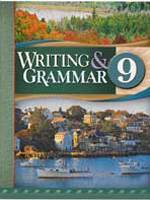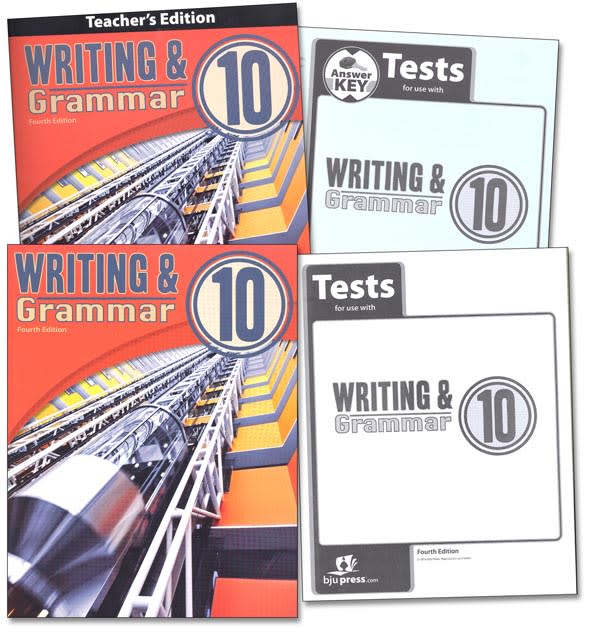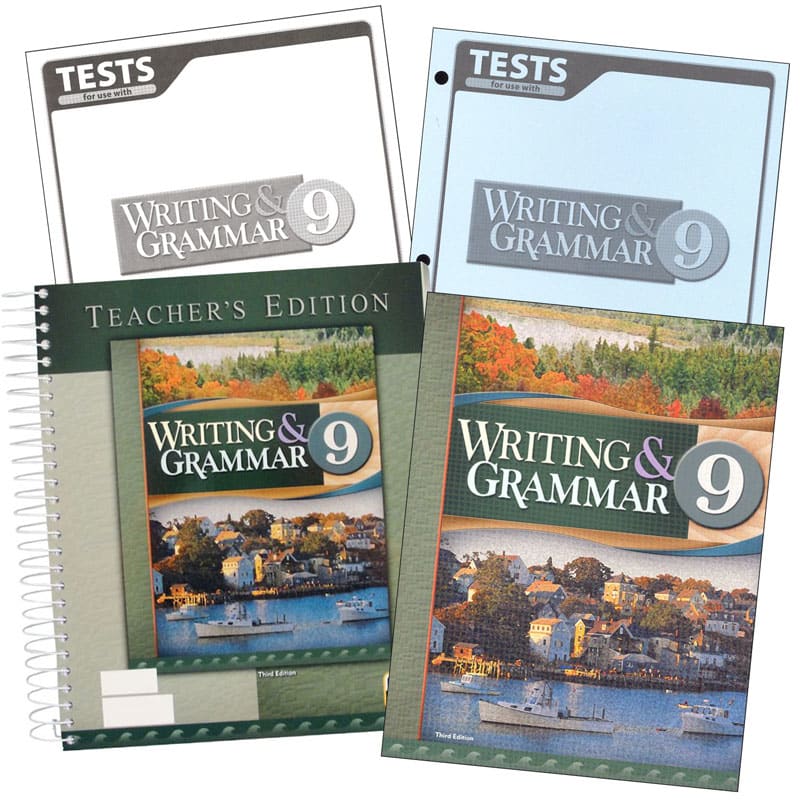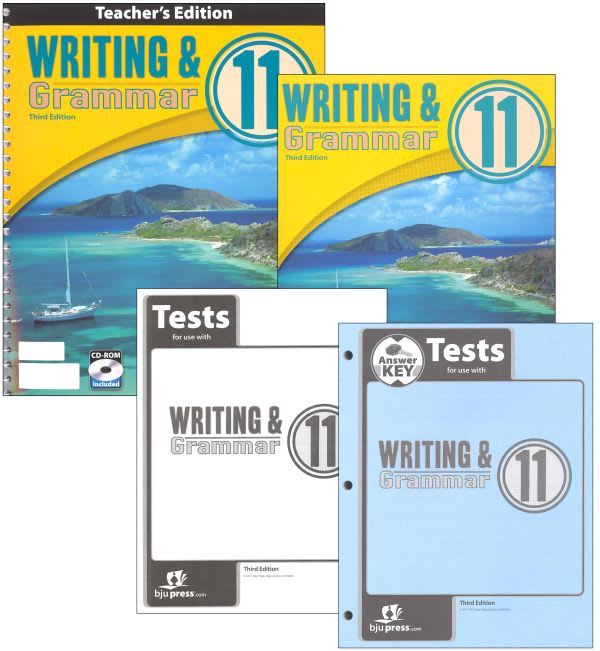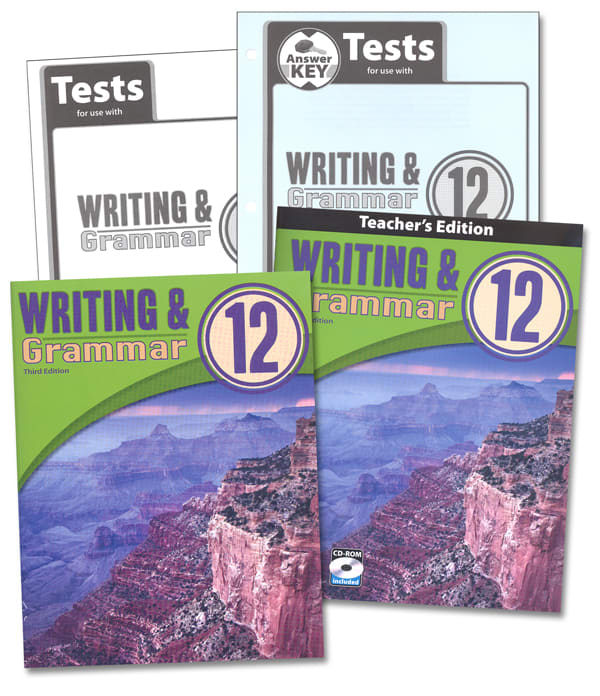BJU Press's Writing and Grammar courses for grades 9 through 12 combine grammar with the development of writing and communication skills. The course for each level consists of a student worktext and a teacher's edition. The subject kit for each level also includes tests and answer keys.
Teacher's editions for each course have suggested schedules for completion in either one or two semesters. A literature course will take up the other semester's worth of time to satisfy the requirement for a full credit for an English course for your high school transcript.
Courses are designed to be taught, although students can complete most of their work independently. Video courses are also available but not always for the latest edition of each course. The teacher's edition for each course is your primary teaching tool. It features reduced student pages with overprinted answers. Teaching information appears in the side and bottom margins. At the front of the teacher's edition is a Lesson Plan Overview showing a suggested teaching schedule.
Each teacher's edition includes either a Teacher's Toolkit CD-ROM or access to the Homeschool Hub. Both have valuable resources you are likely to use, such as pretests, supplemental worksheets or reference pages, ESL helps, writing worksheets with prompts to guide students through assignments, sentence diagramming keys, writing rubrics for each type of writing assignment, and a guide for sharing the gospel with students. Note that sentence diagramming is optional in these courses. Exercises with sentences appropriate for diagramming are marked with a symbol with a "d" within a diamond.
All four levels follow a similar format, although the ninth-grade course devotes more time to grammar and less to composition, with that balance gradually reversing as one progresses through twelfth grade. All courses have reference and study skills chapters that are not scheduled—it is up to you to determine if and when to use those chapters. however, occasionally a lesson includes an icon that points to a particular concept covered in one of these chapters in case you want to use that material.
Each chapter, other than the reference and study skills chapters, begins with a model text that becomes the subject matter for grammar, usage, or composition instruction. Some exercises use biblical subject matter, and scriptural applications sometimes help students to apply biblical principles to ideas from the lessons.
All chapters other than those for study and reference skills either begin or conclude with a composition assignment. Within each chapter, there are usually at least a few sections focused on particular concepts. Each section concludes with a summary of the concept, then a series of written exercises: "Practice the Skill," "Review the Skill," and "Use the Skill." Sometimes there is also a cumulative review.
Chapter review quizzes are at the back of the student books, and their answer keys are in the teacher editions. You might find that the quizzes, coupled with exercises and composition assignments, provide adequate means to evaluate student progress without using the separate tests booklets.
Homeschoolers might appreciate the "One on One" lesson presentation/activity suggestions in the lesson plans, although they are infrequent.
The courses incorporate inductive teaching strategies rather than simply presenting rules to be memorized and applied. However, this is one aspect of the courses that requires the presence of a teacher. If parents have limited time for lesson presentation, they might be able to skip some of these presentations. However, extra care must be taken to ensure students truly learn the material.
As with most language arts courses, grammar is reviewed over and over again at increasing levels of difficulty. If the pretest shows that a teen has already mastered some of the grammar and usage skills, they should skip through some of those exercises, using only those that are useful for sharpening or reinforcing skills. If teens skip some exercises, make sure they don't miss important composition lessons at the end of the chapters.
Composition instruction begins in ninth grade with paragraphs, then continues through various types of essays (including a research essay), poetry, responses to literature, and letter writing. All levels include composition work in every chapter, but they also have a reference chapter on the writing process, usually near the book’s end. Concepts taught there are unscheduled, like the reference skills chapters, so you need to determine if and when to use them.
Tenth grade adds writing assignments such as eyewitness reports, cause-and-effect essays, short stories, editorials, journaling, and a persuasive speech. Additional composition topics in eleventh grade include a research paper, folktales, letters to the editor, memoirs, interviews, narrative poetry, and hymns. Twelve grade focuses heavily upon essay writing and a research paper and also includes writing dramatic scenes, interior monologues, sonnets, and video reports.
These courses are all quite comprehensive, with plenty of help for the teacher and a wide variety of interesting learning activities for students. The biggest problem might be finding time to use the wealth of material from each course without overloading the student or the teacher.





